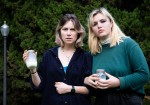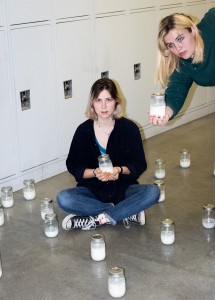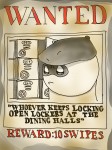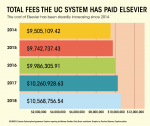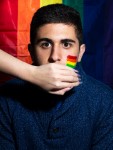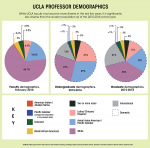Students can attend a feast on the Hill reminiscent of “Game of Thrones'” Red Wedding.
“A Night of Ice and Fire: a Game of Thrones Experience” will take place Wednesday in the De Neve Commons Plaza Room. The Geek Week event will include a dinner feast, where attendees also participate in a “Game of Thrones”-themed Mafia game – intended to mirror the Red Wedding. Asya Cook, the resident director of Delta Terrace, who is overseeing the event, said there will also be “Game of Thrones” trivia from the television series as well as facts exclusive to the books. Though the events take place on the Hill, Geek Week activities are open to the public. Cook said she hopes the event will serve as an opportunity for fans and other attendees alike to embody their inner geek.
“I believe that this “Game of Thrones” event, and Geek Week overall, really serve as a good reminder for people to embrace what they like and different fandoms that they may be into,” Cook said. “We definitely want to invite as many people as possible to just experience different things … and get a chance for them to just learn something different that they may have never thought about before.”
Cook said the Geek Week committee decided to theme the event around the television series because of a general survey conducted fall quarter. The committee asked what fandoms people were a part of, and “Game of Thrones” came up multiple times. “Game of Thrones” also is headed into its final season, she said, leading the committee to choose it.
In the Red Wedding episode, titled “The Rains of Castamere,” the protagonist Stark family intends to celebrate the wedding of another character on the show, but the feast ends with some of the family being murdered.
The event’s dinner will be served buffet style, offering carb-heavy foods in an aim to represent medieval times. While eating, students also will be playing a game of Mafia, infused with characters and other elements from the series, such as the “Game of Thrones” soundtrack playing in the background.
As students file into the room during the first-come, first-served event, each person will receive a card with their role and how to act throughout the evening. One of the cards reads “Hodor,” the name of a character, and whoever gets that card must only say “Hodor” throughout the evening, as the character does in the show. Another playable character is Cersei Lannister, and whoever has that card has the power to kill additional people during the Mafia game, since the fictional character is one of the main antagonists in the series.
“I think it adds to the feel of the Red Wedding piece of people just unsuspectingly going into what they think is the feast, but at any moment, we can call to say, ‘Hey, it’s wintertime,’ which is the equivalent of Mafia’s ‘Go to sleep,’” Cook said.
While students play, they are getting to know each other and moving around, she said. They must also try to figure out who has been assigned which role and who the “White Walkers,” or primary antagonists, are. Participants can form alliances while sharing some food, all reminiscent of the medieval times, Cook said.
This will be the first Geek Week event for fourth-year computer science student Benson Han, a former Daily Bruin staffer. Having read the books and watched the series, he said he plans to attend the “Game of Thrones”-themed dinner. However, because of the number of characters and plot lines within the franchise, Han said the trivia portion might be a bit challenging.
Rieber Terrace Assistant Resident Director Cathy Banh said she attended Geek Week events when she was a student at UCLA, her favorite being a “Harry Potter”-themed dinner – similar to the “Game of Thrones” event – which featured chocolate frogs and a Sorting Hat activity. With its multitude of activities, Banh said Geek Week allows fans of different media to connect with one another.
The sheer number of student organizations on campus to match the large student population leads to highly individualized clubs, Banh said.
“You’ll have one (club) specifically for one interest, and Geek Week does – as much as we can – all of them. It’s giving spaces for students who have different interests to meet each other,” Banh said. “It’s a place for fandoms to cross.”
In addition to honoring the “Game of Thrones” fandom among students, Cook said the Geek Week committee does want to slightly broaden the audience of the event. Die-hard fans familiar with the series and its characters will have a strong understanding of what is going on during the dinner. But the committee organized the game so students who have never seen or read the series can still enjoy it, she said.
“(The event) serves as a good break to say, ‘Hey, you are a person outside of academics – what else are you interested in? What else is a passion area of yours?’” Cook said. “Whether that be comics or ‘Game of Thrones’ TV, a movie, we want students to explore that and embrace that part of them.”

